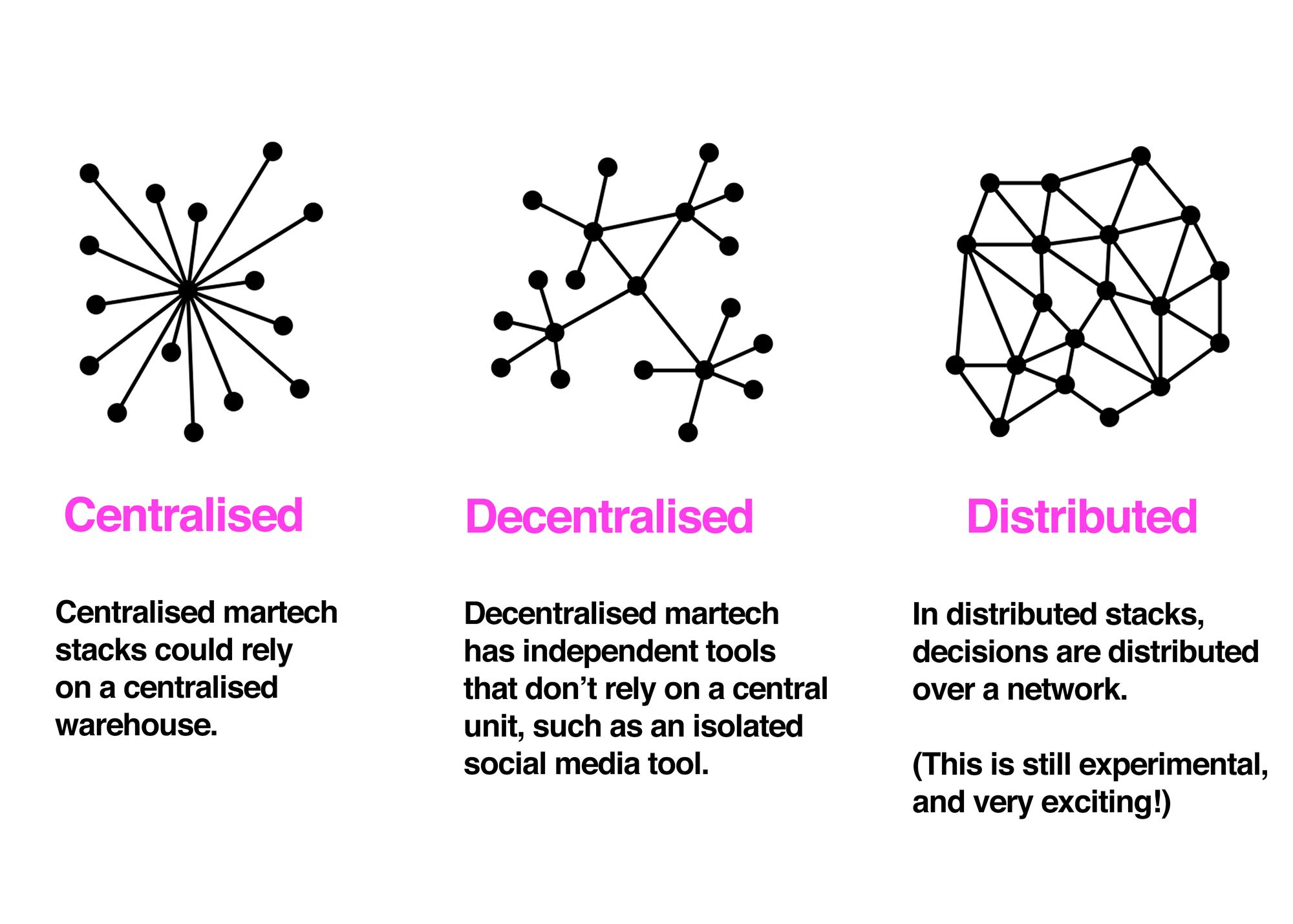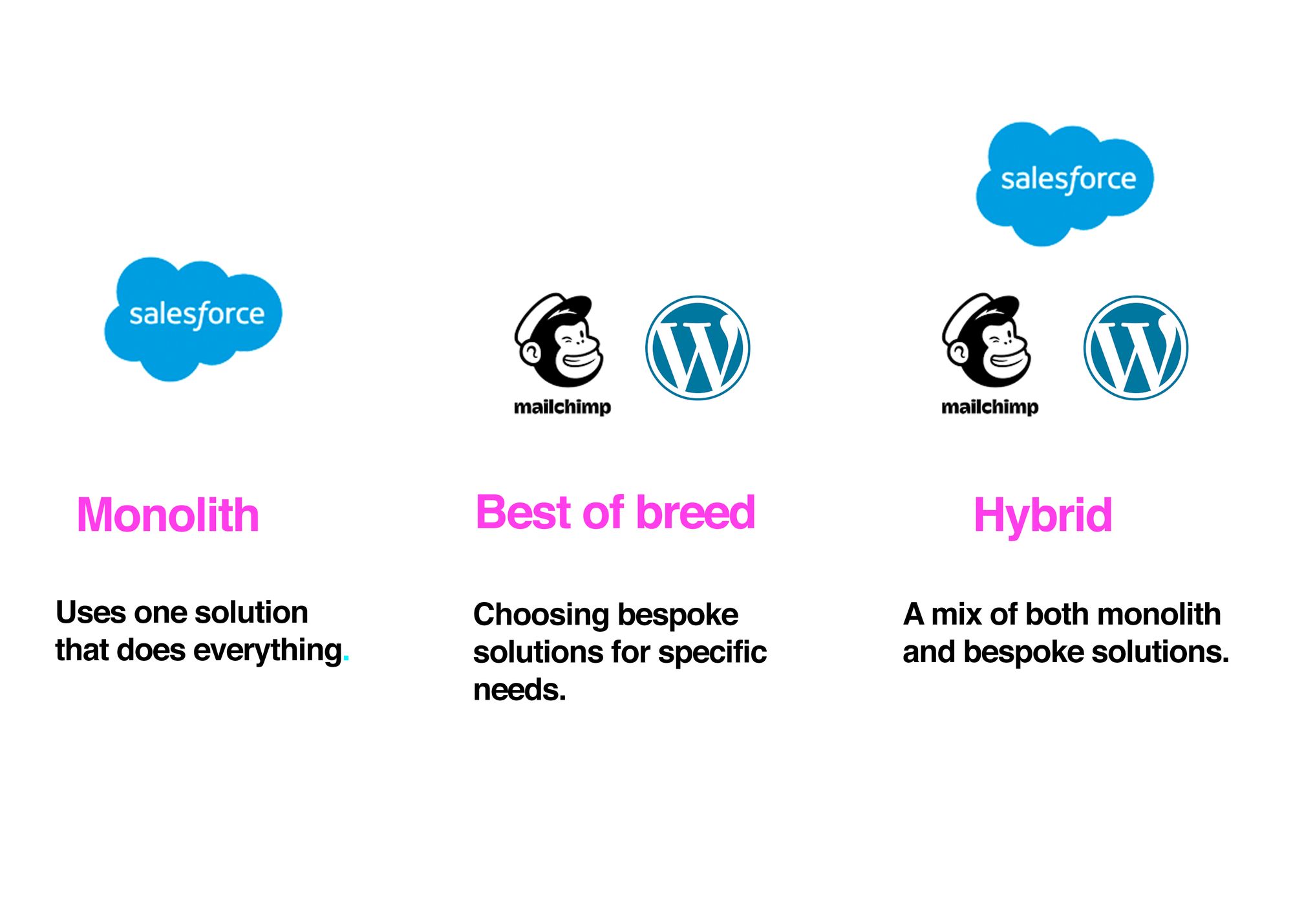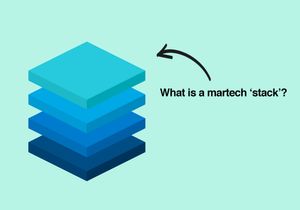An overview of the different types of software architecture and example stacks.
A 'stack' is a grouping of marketing technologies, like a stack of cards only with marketing software and technology.
Stacks represent the different types of technology your organisation uses and how those technologies works together. In practice the marketing technology architecture isn’t as simple as layers in a stack, rather a series of complex interactions between systems and platforms.
There is no such thing as a perfect stack, and different organisations have different stacks based on their marketing and technology needs.
To understand different types of marketing stacks, firstly we need to understand some of the basic software architecture principles.

Types of Martech Architecture
Monolith Martech
Monolith martech is a centralised architecture. This typically features a single deployable unit, including all functionality of the system that runs in the process, often connected to a single database.
Monoliths usually relies on centralised teams too, such as a data analytics team that is required to support other marketing technologies.
The advantages of monolith architecture include clearer visibility of technology, low risk of replication and improved unification of data, however disadvantages include ability to scale, reliance on singular technologies and team bottlenecks.
Decentralised Martech
Decentralised martech architecture has technologies that don't rely on a central unit.
This could be independently operated tools such as CRM and Social media platforms.
The advantages of decentralised architecture is more agility and team autonomy however disadvantages include less connectivity to other areas, higher risks of data replication and lowered quality control.
Distributed Martech (Experimental)
Distributed martech is a new type of architecture and very experimental - it works by multiple services running in their own ecosystem and communicating via networking protocols.
Distributed architecture can have federated teams that can control their own data which is still governed, without requiring a centralised database.

Types of solutions within a stack
Monolith Solutions (One-stop solution)
Not to be confused with the overall monolith architecture, all-encompassing monolith solutions are large ecosystems that have multiple functionalities. An example of this is Adobe Experience Manager or Salesforce Marketing Cloud.
These solutions can be advantageous if you have a need for multiple products that integrate together well, however for many businesses having the exact products in these solutions doesn’t quite fit their business needs.
Best of breed solutions (Bespoke solutions)
Best of breed is a combination of the best solutions fit for that architecture. For example a business might use a mix of different solutions from different vendors.
Hybrid (Mix of monolith and bespoke)
Hybrid is where an architecture consists of both best of breed and monolith solutions, where businesses choose products that fit their needs as well as require monolith solutions.
What are some examples of stacks?
Every martech stack is different based on the organisation's history and needs. We highly recommend checking out Chiefmartec's Stackie Awards for inspiration on how companies are designing their stacks.


